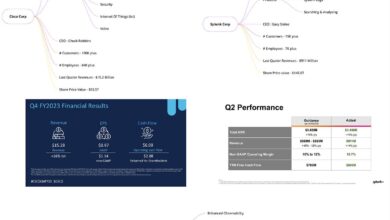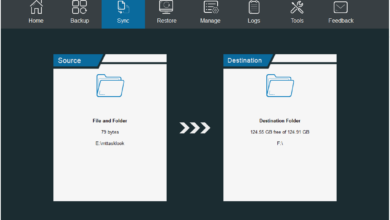
Ransomware Attacks Evolving Tactics, Higher Costs
Ransomware attacks are changing tactics and might prove costlier to victims. The old days of simple file encryption are long gone. Now, sophisticated attacks target critical infrastructure, crippling entire organizations. Double extortion, a terrifying new tactic, combines data encryption with the threat of public data leaks, exponentially increasing the pressure on victims to pay. The rise of Ransomware-as-a-Service (RaaS) has made these attacks more frequent and accessible, even to less technically skilled criminals.
This evolution isn’t just about more sophisticated methods; it’s about a significant increase in the financial and reputational damage suffered by victims.
This shift means businesses face far greater challenges in recovering from attacks. The costs go beyond the ransom itself, encompassing data recovery, system rebuilds, lost productivity, and the devastating blow to brand reputation and customer trust. Understanding these evolving tactics and their financial implications is crucial for any organization hoping to avoid becoming the next victim.
Evolving Ransomware Tactics
The landscape of ransomware attacks has shifted dramatically in recent years, moving beyond simple file encryption to highly sophisticated operations targeting critical infrastructure and leveraging advanced extortion techniques. This evolution presents a growing threat to businesses and individuals alike, demanding a more proactive and comprehensive approach to cybersecurity.
Shift from Simple File Encryption to Attacks on Critical Infrastructure
Early ransomware primarily focused on encrypting individual files, crippling personal computers and small businesses. However, modern ransomware groups are increasingly targeting critical infrastructure, including healthcare systems, energy grids, and government agencies. These attacks often cause widespread disruption and can have significant societal consequences. For example, the Colonial Pipeline ransomware attack in 2021 disrupted fuel supply across the Eastern United States, highlighting the devastating potential of these attacks on essential services.
The sophistication of these attacks involves exploiting vulnerabilities in network systems and using advanced techniques to bypass security measures, allowing for deeper penetration and wider impact.
Double Extortion Techniques
The simple encryption model has largely been superseded by double extortion, a tactic where threat actors encrypt victim data and simultaneously exfiltrate it. This means that even if a victim pays the ransom and decrypts their data, the threat actors still possess a copy and can release it publicly, causing reputational damage and further financial losses. The threat of public data exposure significantly increases the pressure on victims to pay the ransom, making double extortion a highly effective and lucrative strategy for ransomware groups.
The leaked data can include sensitive customer information, intellectual property, or financial records.
Rise of Ransomware-as-a-Service (RaaS)
The emergence of Ransomware-as-a-Service (RaaS) has significantly lowered the barrier to entry for malicious actors. RaaS platforms provide the tools and infrastructure for individuals with limited technical skills to launch ransomware attacks, democratizing the threat and increasing its frequency and reach. This model allows affiliates to rent ransomware tools and infrastructure, paying a percentage of the ransom to the RaaS operator.
This lowers the operational cost for the affiliate, increasing the profitability of attacks and driving a surge in ransomware activity.
Comparison of Tactics Used by Different Ransomware Groups
Different ransomware groups employ unique approaches, reflecting varying levels of sophistication and targeting strategies. Some groups focus on mass-scale attacks targeting numerous small businesses, while others specialize in high-value targets, such as large corporations or government entities. Their techniques range from phishing emails and exploiting software vulnerabilities to using advanced social engineering tactics to gain access to systems.
For example, REvil (also known as Sodinokibi) was known for its highly sophisticated attacks and targeted approach, while Conti focused on large-scale attacks on various sectors. The tactics employed often reflect the group’s resources, technical expertise, and overall operational goals.
Ransomware attacks are evolving, moving beyond simple encryption to data exfiltration and targeted attacks, making recovery far more expensive. This highlights the need for robust, adaptable security systems, and that’s where the future of application development comes in; check out this article on domino app dev the low code and pro code future to see how modern development can help build more resilient systems.
Ultimately, the increasing sophistication of ransomware demands equally sophisticated defenses to mitigate the ever-growing costs.
| Year | Tactic | Target | Impact |
|---|---|---|---|
| 2019 | Simple file encryption | Individual users, small businesses | Data loss, operational disruption |
| 2020 | Double extortion (encryption and data leak) | Small to medium-sized businesses | Data loss, operational disruption, reputational damage |
| 2021 | Attacks on critical infrastructure | Healthcare, energy, government | Widespread disruption, societal impact |
| 2022 | RaaS proliferation, increased sophistication | Broad range of targets | Increased frequency and severity of attacks |
| 2023 | Advanced evasion techniques, targeted attacks | High-value targets, specific industries | Significant financial and reputational damage |
Increased Costs for Victims
Ransomware attacks are no longer a simple inconvenience; they represent a significant and growing financial threat to businesses and individuals alike. The costs associated with these attacks extend far beyond the initial ransom demand, encompassing a wide range of direct and indirect expenses that can cripple even the most robust organizations. Understanding the multifaceted financial impact is crucial for developing effective prevention and mitigation strategies.The direct financial burden of a ransomware attack is immediately apparent.
This includes the obvious cost of paying the ransom itself – a figure that can range from a few thousand dollars to millions, depending on the attacker’s demands and the victim’s perceived value. Beyond the ransom, victims face substantial recovery expenses. This involves the cost of restoring data from backups (if available and intact), purchasing new hardware or software, engaging cybersecurity experts for incident response and remediation, and paying for forensic analysis to understand the extent of the breach.
The disruption to business operations adds another layer of cost, including lost productivity, missed deadlines, and potential damage to customer relationships.
Direct Financial Costs
The direct costs are the most immediate and tangible consequences of a ransomware attack. These costs can quickly escalate, draining resources and hindering recovery efforts.
- Ransom Payments: The price demanded by attackers for the decryption key or the promise not to release stolen data. This amount varies greatly depending on the sophistication of the attack, the sensitivity of the data, and the perceived financial capacity of the victim.
- Data Recovery Expenses: Costs associated with restoring data from backups, purchasing new hardware or software, and rebuilding compromised systems. This can be particularly expensive if backups are inadequate, corrupted, or unavailable.
- Incident Response Costs: Expenses related to hiring cybersecurity experts to investigate the attack, contain the breach, and remediate the affected systems. This includes forensic analysis, malware removal, and network security improvements.
- Business Disruption Costs: Lost revenue, missed deadlines, and decreased productivity resulting from the downtime caused by the ransomware attack. This can have a significant impact on profitability and long-term growth.
Indirect Financial Costs
Beyond the immediate financial outlay, ransomware attacks inflict significant indirect costs that can linger for months or even years after the initial incident. These costs are often harder to quantify but can be equally, if not more, damaging in the long run.
- Reputational Damage: A ransomware attack can severely damage a company’s reputation, leading to a loss of customer trust and potential damage to brand image. This can impact future business opportunities and investor confidence.
- Loss of Customer Trust: Customers may be hesitant to do business with an organization that has experienced a data breach, especially if sensitive information was compromised. This can lead to lost sales and market share.
- Legal Liabilities: Organizations may face legal action from customers, regulators, or partners if they fail to comply with data protection regulations or if sensitive data is leaked. This can result in significant fines and legal fees.
- Insurance Premiums: Following a ransomware attack, insurance premiums are likely to increase, reflecting the heightened risk profile of the organization. This adds a long-term financial burden.
Factors Contributing to Increasing Costs
Several factors contribute to the escalating costs associated with ransomware attacks.
- Improved Encryption Techniques: Attackers are constantly developing more sophisticated encryption methods, making data recovery more difficult and expensive.
- Growing Value of Stolen Data: The value of stolen data on the dark web is increasing, incentivizing attackers to target organizations with valuable intellectual property, customer data, or financial information. This increases the ransom demands and the potential for long-term damage.
- Double Extortion Tactics: Many ransomware gangs now employ double extortion tactics, encrypting data and simultaneously stealing it, threatening to leak the data publicly if the ransom is not paid. This significantly increases the pressure on victims to pay.
- Increased Attack Frequency and Sophistication: The frequency and sophistication of ransomware attacks are increasing, making organizations more vulnerable and increasing the overall costs of prevention and recovery.
Examples of Real-World Ransomware Attacks and Costs
The Colonial Pipeline ransomware attack in 2021 resulted in a ransom payment of $4.4 million and millions more in operational costs and cleanup. The NotPetya attack in 2017, attributed to a nation-state actor, caused billions of dollars in damage globally, affecting organizations like Maersk and Merck. These examples demonstrate the devastating financial impact of ransomware attacks on businesses of all sizes.
Long-Term Financial Costs
The financial consequences of a ransomware attack extend far beyond the immediate aftermath.
- Reputational Repair: Rebuilding trust and restoring reputation after a ransomware attack can be a long and costly process, requiring significant investment in public relations and marketing efforts.
- Increased Security Measures: Organizations often need to invest in more robust security measures to prevent future attacks, including advanced threat detection systems, security awareness training, and incident response planning. These measures represent a substantial ongoing expense.
- Lost Business Opportunities: The disruption caused by a ransomware attack can lead to lost business opportunities, contracts, and partnerships, impacting long-term growth and profitability.
The Role of Human Error
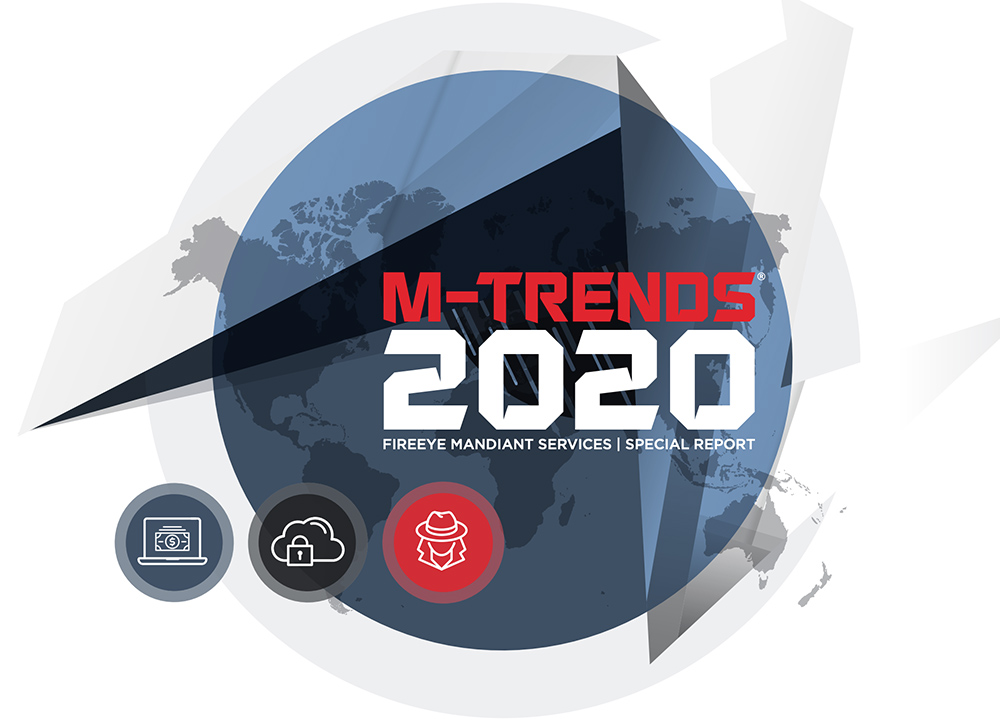
Ransomware attacks are becoming increasingly sophisticated, but the weakest link in any organization’s security remains the human element. Despite advanced security technologies, human error continues to be the primary cause of successful ransomware infections. Understanding these vulnerabilities and implementing effective training programs is crucial for mitigating risk.Human error manifests in various ways, often opening the door for malicious actors to exploit organizational weaknesses.
Negligence, lack of awareness, and susceptibility to social engineering techniques all contribute significantly to the success of ransomware attacks. The cost of these errors can be devastating, ranging from financial losses and reputational damage to operational disruptions and legal repercussions.
Common Human Errors Leading to Ransomware Infections
Phishing emails, disguised as legitimate communications, remain a highly effective attack vector. These emails often contain malicious attachments or links that, when clicked, download malware onto the victim’s computer. Weak passwords, easily guessed or cracked, provide attackers with easy access to systems and sensitive data. Poor password hygiene, such as reusing passwords across multiple accounts or using easily guessable combinations, significantly increases vulnerability.
Furthermore, a lack of awareness regarding social engineering tactics, such as pretexting or baiting, leaves employees susceptible to manipulation.
Social Engineering Techniques in Ransomware Attacks
Social engineering relies on manipulating individuals into divulging confidential information or performing actions that compromise security. Pretexting, for example, involves creating a believable scenario to trick the victim into revealing sensitive data. Baiting uses enticing offers or threats to lure victims into clicking malicious links or downloading infected files. Phishing, as mentioned before, is a common form of social engineering used to obtain login credentials or other sensitive information.
These techniques often exploit human psychology, playing on trust, fear, or curiosity to achieve their goals. For instance, an attacker might impersonate a trusted colleague or IT support staff to gain access to a system.
A Security Awareness Training Program
A comprehensive security awareness training program should be a cornerstone of any organization’s ransomware defense strategy. This program should include several key modules:
- Module 1: Understanding Ransomware
-This module will define ransomware, explain its various forms, and detail the potential consequences of an infection. Learning Objective: Participants will be able to identify the characteristics of ransomware attacks and understand the associated risks. - Module 2: Recognizing and Avoiding Phishing Attacks
-This module will teach employees how to identify suspicious emails, attachments, and links. Learning Objective: Participants will be able to identify and report phishing attempts, and understand best practices for handling suspicious emails. - Module 3: Password Security Best Practices
-This module will cover creating strong, unique passwords, the importance of password managers, and the risks of password reuse. Learning Objective: Participants will be able to create and manage strong, unique passwords and understand the importance of password security. - Module 4: Recognizing and Avoiding Social Engineering Tactics
-This module will cover various social engineering techniques and how to protect against them. Learning Objective: Participants will be able to identify and avoid common social engineering tactics, including phishing, baiting, and pretexting. - Module 5: Reporting Security Incidents
-This module will Artikel the procedures for reporting suspicious activity or security incidents. Learning Objective: Participants will be able to promptly and correctly report any suspicious activity or security incidents.
Best Practices for Password Security and Multi-Factor Authentication, Ransomware attacks are changing tactics and might prove costlier to victims
Strong passwords should be complex, using a combination of uppercase and lowercase letters, numbers, and symbols. They should also be unique to each account and regularly changed. Password managers can help individuals create and manage strong, unique passwords for multiple accounts. Implementing multi-factor authentication (MFA) adds an extra layer of security by requiring users to provide multiple forms of authentication, such as a password and a one-time code from a mobile device, before gaining access to an account.
This significantly reduces the risk of unauthorized access, even if an attacker obtains a password.
Hypothetical Scenario: Trained vs. Untrained Employee
Imagine an untrained employee receives a phishing email appearing to be from their bank, urging them to update their account information via a provided link. Likely, they would click the link, potentially infecting their system with ransomware. In contrast, a trained employee would recognize the email’s suspicious nature—the sender’s address might not match the bank’s official domain, the email might contain grammatical errors, or the tone might seem unusual.
They would not click the link and would instead report the suspicious email to their IT department. This simple scenario highlights the effectiveness of security awareness training in preventing ransomware attacks.
Technological Advancements in Ransomware Mitigation
The landscape of ransomware attacks is constantly evolving, necessitating a parallel evolution in our defensive strategies. Technological advancements are crucial in combating this persistent threat, offering increasingly sophisticated tools and techniques to prevent, detect, and respond to ransomware incidents. This exploration focuses on key advancements and their limitations in the ongoing fight against ransomware.
Endpoint Detection and Response (EDR) Solutions
EDR solutions represent a significant leap forward in endpoint security. These systems go beyond traditional antivirus software by actively monitoring endpoint activity, detecting suspicious behavior, and responding to threats in real-time. Advanced EDR solutions leverage machine learning and artificial intelligence to identify anomalies indicative of ransomware infections, such as unusual file access patterns, encrypted files, or attempts to disable security features.
This proactive approach allows for faster detection and containment, minimizing the impact of a ransomware attack. For instance, an EDR system might identify a suspicious executable attempting to encrypt files and automatically quarantine it, preventing widespread infection. Furthermore, many EDR solutions offer features such as rollback capabilities, enabling the system to revert to a pre-infection state, effectively undoing the damage caused by the ransomware.
Security Information and Event Management (SIEM) Systems
SIEM systems play a vital role in detecting and responding to ransomware attacks across an entire organization’s infrastructure. By aggregating and analyzing security logs from various sources, SIEM systems can identify patterns and correlations that might indicate a ransomware infection. For example, a SIEM system might detect a surge in network traffic to a command-and-control server, or an unusual number of file encryption events, suggesting a ransomware attack is underway.
This centralized view allows security teams to gain a comprehensive understanding of the attack, enabling a faster and more coordinated response. Moreover, SIEM systems can automate incident response processes, such as isolating infected systems or blocking malicious IP addresses, improving efficiency and reducing the time it takes to contain the attack.
Backup and Recovery Strategies
Robust backup and recovery strategies remain a cornerstone of ransomware protection. However, the complexity of modern ransomware necessitates sophisticated approaches beyond simple file backups. The 3-2-1 backup rule (3 copies of data, on 2 different media, with 1 copy offsite) is a widely accepted best practice. However, air-gapped backups (completely disconnected from the network) are becoming increasingly important to prevent ransomware from encrypting backup copies.
Immutable backups, which cannot be altered or deleted after creation, provide an additional layer of protection. Furthermore, regular testing of backup and recovery procedures is crucial to ensure that data can be effectively restored in the event of a ransomware attack. The effectiveness of the recovery process hinges upon the frequency and reliability of backups, as well as the speed and efficiency of the restoration process.
Organizations must choose a backup strategy that aligns with their specific risk tolerance and recovery time objectives.
Limitations of Current Cybersecurity Technologies
Despite significant advancements, current cybersecurity technologies still face limitations in effectively addressing the evolving ransomware threat. Sophisticated ransomware strains utilize advanced evasion techniques to bypass traditional security controls, such as anti-virus software and firewalls. The increasing use of polymorphic and metamorphic ransomware makes detection more challenging. Furthermore, human error remains a significant vulnerability, with phishing attacks and social engineering tactics frequently used to gain initial access to systems.
The speed at which ransomware evolves and adapts necessitates a continuous improvement in cybersecurity technologies and strategies. The reliance on signature-based detection, for instance, can lag behind the development of new ransomware variants, creating a window of vulnerability. Additionally, the increasing sophistication of ransomware’s encryption algorithms and the use of double extortion techniques (data exfiltration and encryption) make recovery more complex and costly.
Ransomware Attack Flowchart and Security Technology Intervention Points
A typical ransomware attack might follow these steps:[Imagine a flowchart here. The flowchart would depict the following steps:Initial Access (e.g., phishing email, exploit kit): EDR can detect suspicious activity here.
2. Lateral Movement
SIEM can detect unusual network traffic and access patterns.
3. Privilege Escalation
EDR can monitor for attempts to elevate user privileges.
4. Data Exfiltration
SIEM can detect large outbound data transfers.
5. Encryption
EDR can detect file encryption activity.
6. Ransom Note
EDR and SIEM can detect the appearance of ransom notes.
7. Command and Control Communication
SIEM can detect communication with known malicious servers.
8. Data Recovery (Successful or Unsuccessful)
The effectiveness of backups and recovery procedures are tested here.Each step would have a box indicating the point where various security technologies can intervene. Arrows would indicate the flow of the attack.]
The Legal and Regulatory Landscape: Ransomware Attacks Are Changing Tactics And Might Prove Costlier To Victims
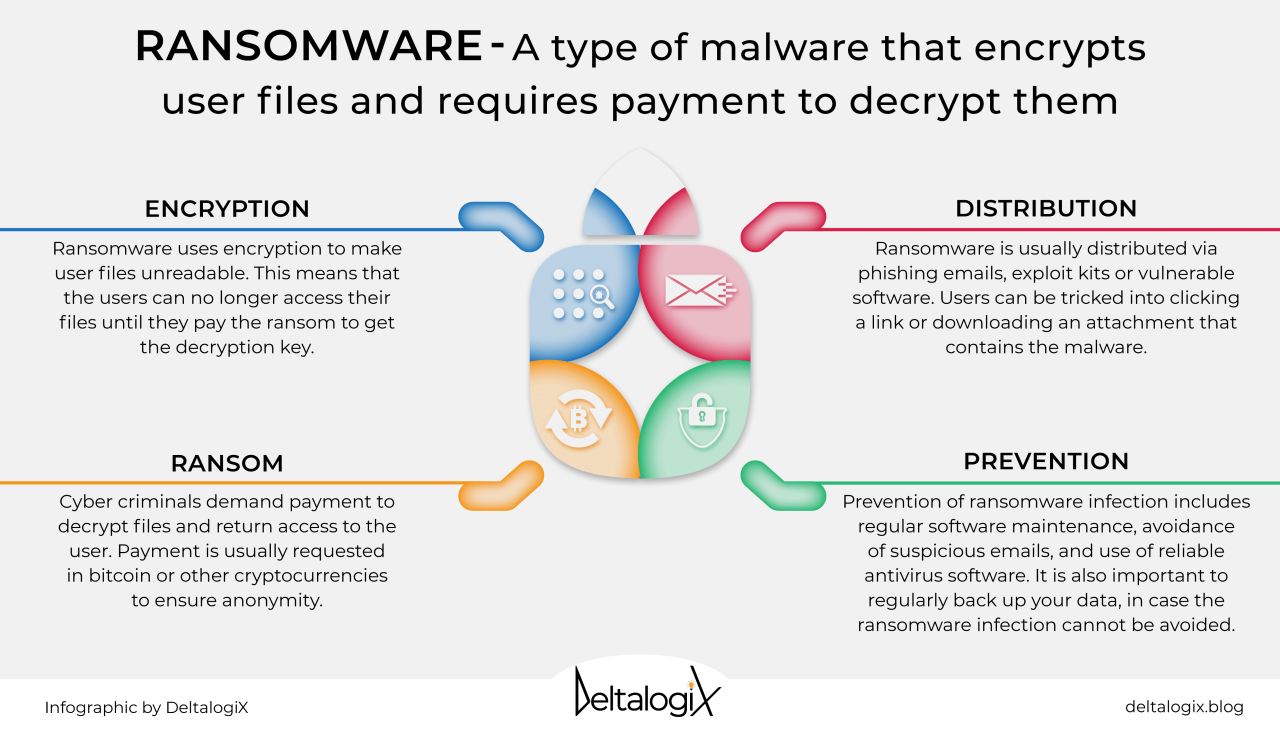
The rise of ransomware attacks has spurred significant legislative and regulatory activity worldwide, aiming to both deter criminal activity and protect victims. This evolving legal landscape presents new challenges and responsibilities for organizations, highlighting the crucial need for proactive security measures and legal counsel. The implications extend beyond immediate financial losses, impacting an organization’s reputation, operational continuity, and even its long-term viability.
Recent Legislation and Regulations
Several countries have enacted or are considering legislation specifically targeting ransomware. For example, the United States has seen increased focus on improving cybersecurity practices through initiatives like the Cybersecurity Maturity Model Certification (CMMC) for defense contractors and the increasing enforcement of existing regulations like HIPAA for healthcare data breaches. The European Union’s General Data Protection Regulation (GDPR) also plays a significant role, imposing strict requirements for data protection and breach notification, impacting organizations handling EU citizen data regardless of their location.
These regulations often include provisions for hefty fines for non-compliance, acting as a powerful deterrent. The UK’s National Cyber Security Centre (NCSC) also actively publishes guidance and best practices for organizations to mitigate ransomware threats.
Legal Implications of Ransom Payments
Paying a ransom is a complex legal issue with potential repercussions. While some argue it’s a necessary evil to restore critical data or systems, paying ransoms can be illegal in some jurisdictions, potentially violating sanctions against terrorist organizations or other criminal entities. Furthermore, paying a ransom may inadvertently fund further criminal activity, encouraging more attacks. It also raises questions about insurance coverage, as some policies explicitly exclude ransom payments, while others may have limitations or require specific reporting procedures.
The legal landscape regarding ransom payments is constantly evolving, emphasizing the importance of seeking legal advice before making any decisions.
Law Enforcement’s Role in Combating Ransomware
Law enforcement agencies worldwide play a crucial role in investigating and prosecuting ransomware criminals. This involves tracing the flow of funds, identifying the perpetrators, and working internationally to coordinate investigations and arrests. Agencies like the FBI in the US, Europol in Europe, and similar organizations in other countries actively collaborate to dismantle ransomware gangs, employing sophisticated techniques to track down attackers and seize their assets.
However, the decentralized and often international nature of ransomware attacks presents significant challenges to effective prosecution.
Challenges in International Cooperation
Effective international cooperation is critical in combating ransomware. Challenges include differences in legal frameworks, jurisdictional issues, and the difficulty of gathering evidence across borders. Ransomware gangs often operate from countries with weak law enforcement or lax legal frameworks, making extradition and prosecution difficult. Building trust and effective communication channels between law enforcement agencies globally is essential for improving the success rate of investigations and prosecutions.
International agreements and initiatives aimed at improving information sharing and coordinated enforcement efforts are vital.
Legal Ramifications of Inadequate Security Measures
Organizations failing to implement appropriate security measures face significant legal ramifications. Data breach notifications, fines, and legal actions from affected individuals or regulatory bodies are common outcomes. The severity of penalties depends on factors like the nature of the data compromised, the organization’s negligence in implementing security measures, and the extent of the damage caused. Demonstrating a reasonable level of security is crucial in mitigating legal liability.
Failing to do so can result in reputational damage, loss of customer trust, and substantial financial penalties. Proactive implementation of robust security measures, including regular security assessments, employee training, and incident response plans, is essential for minimizing legal risk.
Epilogue
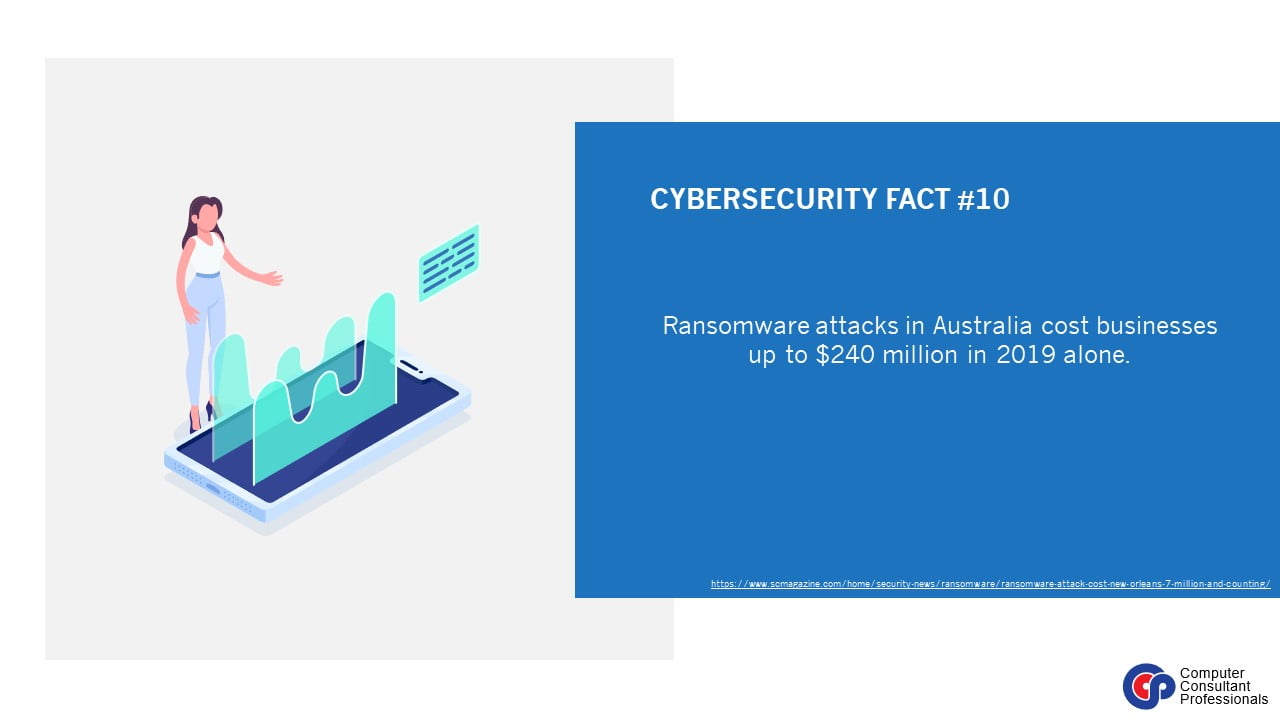
The landscape of ransomware attacks is constantly shifting, demanding proactive and adaptable security strategies. While technological advancements offer powerful mitigation tools, human error remains a significant vulnerability. Organizations must invest in robust security measures, employee training, and incident response planning to effectively combat these evolving threats. Failing to do so will only lead to increasingly higher costs and potentially devastating consequences.
The future of cybersecurity demands a multi-faceted approach, encompassing technology, training, and a deep understanding of the ever-changing tactics employed by ransomware criminals.
User Queries
What is double extortion ransomware?
Double extortion ransomware attacks involve not only encrypting a victim’s data but also stealing it and threatening to publicly release it if a ransom isn’t paid. This significantly increases the pressure on victims.
How can I protect myself from ransomware?
Implement strong passwords, multi-factor authentication, regular software updates, employee security training, and robust backups. Consider endpoint detection and response (EDR) solutions.
Should I pay a ransom?
Paying a ransom is generally not recommended. It doesn’t guarantee data recovery, funds criminal activity, and may not prevent future attacks. Focus on prevention and recovery strategies instead.
What is Ransomware-as-a-Service (RaaS)?
RaaS is a business model where cybercriminals offer ransomware tools and services to others, making it easier for less technically skilled individuals to launch attacks.


